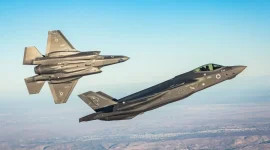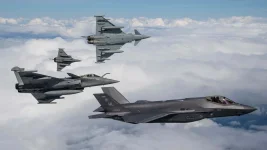- Views: 4K
- Replies: 25

India faces a critical decision regarding its fifth-generation fighter jet program, with the Russian Su-57 and the American F-35 emerging as the primary contenders.
This choice carries significant strategic implications, impacting India's defence capabilities, international relationships, and long-term technological autonomy.
The Su-57, Russia's fifth-generation fighter, has been touted for its versatility as a multi-role aircraft capable of air superiority, ground attack, and electronic warfare. Proponents highlight its combination of stealth, speed, and maneuverability, suggesting a balanced approach suited to India's potential combat scenarios.
Furthermore, the Su-57 aligns with India's "Make in India" initiative, potentially allowing for joint production and technology transfer, which could boost indigenous defence capabilities.
However, concerns remain about the Su-57's actual readiness and performance, given its delayed development and the geopolitical implications of deepening military ties with Russia amidst current global tensions.
Conversely, the F-35 Lightning II from Lockheed Martin represents the pinnacle of Western fifth-generation technology, emphasizing stealth, advanced sensor fusion, and network-centric warfare. With a proven track record in numerous air forces worldwide, the F-35 offers technological maturity and integration capabilities.
However, it comes with significant caveats, including high operational costs, maintenance demands, and potential political constraints due to U.S. foreign policy considerations. Questions also linger about the F-35's suitability for India, with some suggesting the IAF might not be fully prepared to handle such advanced technology.
Adding another layer of complexity is India's commitment to indigenous fighter jet programs like the Tejas Mark 1A and the Advanced Medium Combat Aircraft (AMCA). These programs, though facing delays, are crucial for India's long-term strategic autonomy.
Investing heavily in foreign fighters could divert resources from these indigenous efforts, raising concerns about balancing immediate capability enhancement with long-term technological sovereignty.
The recent aggressive promotion of the Su-57 by Russian media, particularly in light of President Putin's upcoming visit to India, appears to be a strategic maneuver to secure a significant deal.
This push might be aimed at countering the F-35's allure and ensuring continued military cooperation between Russia and India. However, it is essential to discern whether this promotion reflects genuine strategic partnership or primarily serves Russia's geopolitical interests.
Ultimately, India must carefully weigh several strategic factors:
- Operational Capabilities: Assessing the true capabilities of both aircraft and their suitability for India's specific operational needs and strategic environment.
- Technological Autonomy: Balancing the acquisition of foreign fighters with the continued development of indigenous platforms like the AMCA.
- Industrial Collaboration: Evaluating the potential for technology transfer and joint production, particularly with the Su-57, and its impact on India's domestic defence industry.
- Geopolitical Implications: Considering the broader implications of deepening military ties with either Russia or the U.S. in the context of current global tensions.
- Cost-Effectiveness: Analyzing the long-term costs, including acquisition, operation, and maintenance, associated with each aircraft.



